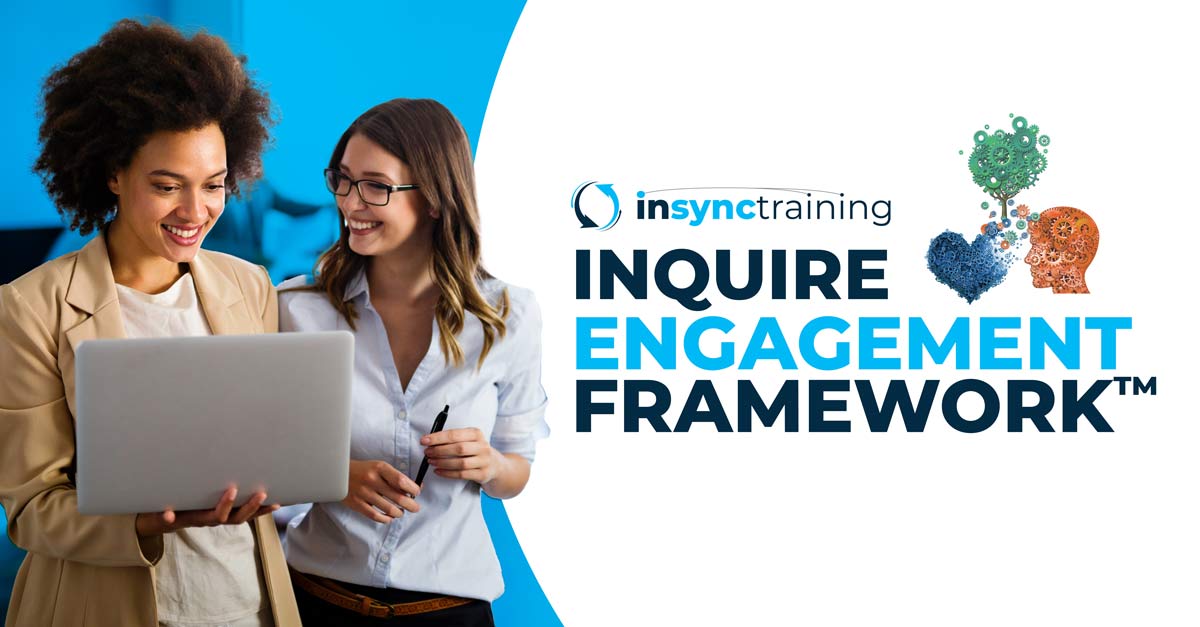5 min read
Brain-Science: A Framework for Learner Engagement
.jpg) Dr. Charles (Chip) Dye, Ph.D.
:
Oct 2, 2025 12:00:00 AM
Dr. Charles (Chip) Dye, Ph.D.
:
Oct 2, 2025 12:00:00 AM

The Research behind Our Approach
As virtual hybrid learning becomes part of most organizations' learning strategies, many of us have started to research ways to increase learner engagement in such an environment. Brain science has recently taken center stage in the training and educational sectors, claiming to introduce innovative approaches to instruction, design, and virtual training methodology that will revolutionize learning experiences.
Like many other specialized terms, "brain science" isn't always clearly defined. Instead, its meaning often relies on the context in which it's used, such as marketing content, research papers, or instructional guides. In its original context, brain science is a methodology by which we select the best instructional treatments and delivery techniques to optimize learner outcomes.
What Is Brain-Science?
In learning and development, a husband-and-wife research team coined the term "brain science" in 1991. They examined instructional practices in primary and secondary education (Caine & Caine, 1991). Their research focused on applying an interdisciplinary approach to learning that included cognitive psychology and neuroscience, which has further expanded to include computer science, biology, anthropology, and related disciplines.
Cognitive psychology entails the study of mental processes—all of the things that go on inside your brain, including creativity, perception, thinking, memory/recall, attention, language, problem-solving, and learning, as well as the observable phenomena around these processes with the environment. There are numerous practical applications for cognitive psychology, ranging from therapeutic treatment for brain injury to developing decision-making protocols, enhancing instructional effectiveness, crafting classroom instructional strategies or enhancing recall and application.
Neuroscience as a field of study encompasses the scientific disciplines dealing with physical structures, development, function, chemistry, and pathology of the brain and nervous system. Like cognitive psychology, neuroscience has a broad application in medicine, therapy, and education.
Within our learning and development context, we can think about neuroscience as studying the physical changes in the brain while learning, and cognitive psychology as studying the intangibles of thought and reasoning as well as environmental interactions as learning occurs.
Measurability and the Learner
If we think about the learner in one of the diverse learning opportunities and environments available today, one recurring theme is the use of the term “engagement.” A casual review of current literature in academic research finds more than 300 scholarly articles and more than 2,000 trade articles in the past two years alone that use some variation of the term “learner engagement,” but few commentators define the term explicitly.
Perhaps the ubiquity of the usage lets researchers and commentators continue the practice without a strict definition–they can assume everyone understands the meaning of the term.
Learner engagement has developed into a short-hand term that loosely represents an combination of learner subject-matter interest/expertise, attitude, motivation, and mastery. Moreover, people often explicitly or implicitly assume that an engaged learner will achieve better outcomes against measurable rubrics than a disengaged one. Thus, the challenge for learning and development professionals appears to be the need to develop engaging instructional experiences. If the learning is engaging, the thinking goes, then the instruction will be a success. QED.
However, returning to the precepts of Caine and Caine (1991), we must ask ourselves—what exactly is engagement? How do we measure it? And what are the outcomes for an engaged learner versus a disengaged learner?
Put simply, do we truly understand what engagement looks like? Can we recognize it when it's happening?
The InQuire Engagement Framework™
InSync has been working on a research project known as the InQuire Engagement Framework™. This project aims to enhance teaching methods to result in noticeable improvements in educational outcomes. The framework focuses on three elements of student engagement—emotional, cognitive, and environmental. It also includes strategies to improve course design and delivery in line with organizational goals. The framework can be used across all types of learning settings, including virtual, hybrid, and blended learning.
InSync started this research into the virtual learning experience in 2005, long before hybrid learning and virtual classroom software became common in education and training sectors. By 2018, InSync had developed and started verifying a scale, tools, behavioral indicators, and measures related to the hidden concept of student engagement. They applied these to the virtual classroom setting to evaluate how student engagement affects learning outcomes.
We can summarize the findings of the ongoing research as "engaged learners achieve better outcomes."
While most seasoned instructional professionals claimed positive engagement correlated strongly with improvement, the fact is that we couldn’t measure engagement and therefore couldn’t evaluate the effects of engagement.
With this research, InSync has implemented a clear and quantifiable framework of design approaches and instructional strategies that improve learning results, together defining "learner engagement."
Based on the research, there are two key ideas to understand about learner engagement:
-
Learner engagement is highly dynamic. It’s easy to “lose” a a previously engaged learner if technology doesn't work right, content seems boring or irrelevant, or the learner doesn't feel safe in the environment. It's much harder to get that learner back.
-
Different aspects of learner engagement—intellectual, emotional, and environmental—influence each other. For example, a learner's emotional engagement can directly impact their intellectual engagement, and vice versa.
The Role of Designers in Enhancing Engagement
When we consider learner engagement as a desired outcome within the learning experience, the instructional designer and delivery team take active roles in initiating and maintaining engagement throughout the experience.
In the instructional process, everything begins with design. In instructional design and development , we make key strategic decisions that have far-reaching consequences in delivery. Though this is not a new concept, it is becoming more apparent: poorly made decisions early in the design process become more evident in the virtual classroom due to the lack of mitigating circumstances. It used to be the usual case that a strong facilitator in traditional classroom settings could resolve many problems in the moment.
If designers reflect on the need to engage learners, what they’re really trying to do is align the intent of the learner with that of the instruction. Not doing so significantly reduces the chances of learner engagement and adults perceive it as a violation of a basic learning principle (Knowles, 1981).
The truth is, relevance is not an absolute fact but rather a perception of learners. Under Knowles's andragogical model, we can better think of relevance and applicability as a result of aligning learner intent with the desired learning outcome in the instructional program. The designer can incorporate this alignment into the training experience, and the instructional team can clarify it to the learner. Such alignment promotes engagement along all three factors, most notably in the intellectual factor.
The Role of Virtual Facilitators and Producers in Enhancing Engagement
The instructional team of virtual facilitator and producer (often referred to as a virtual classroom host) work together to manage interaction between individual learners, lead the instructional experience, promote engagement in the subject matter through discussion, interaction and collaboration, and manage individual needs within the learning environment. As I mentioned earlier, learner engagement is profoundly dynamic. It’s easy to “lose” a learner if something—anything—goes wrong.
It's easier for things to go wrong in a virtual environment. And it is harder to notice learners becoming disengaged. Consequently, it's crucial to ensure all participants in the learning process can fully engage with every aspect of the learning environment. This includes interaction with their peers, the facilitator, and the topic being discussed. We must also make sure learners understand how the instruction will help them achieve their desired outcomes.
The InQuire Engagement Framework™ offers a variety of observable criteria and tactics within the instructional practice to maintain engagement and help a lost learner get back on track.
Looking Past the Pandemic Rush to Virtual
The global pandemic in 2020 forced many businesses into new learning environments and strategies to address existing and emergent instructional needs. Many of the solutions adopted were expedient and met the short-term goal of getting people online together, but were less than optimal in actual learner outcomes.
The pandemic certainly accelerated the adoption of virtual instructional delivery. However, learning and development professionals should now focus on enhancing their instructional practice by revisiting their approach. They should include a variety of instructional strategies that are effective and engaging for the learner, particularly in the virtual classroom. This is crucial as the impacts of the pandemic continue to affect the globe.
Someday in the near term the pandemic, from all analysis, will become endemic, and we as an industry need to learn to re-focus on instructional solutions that address the learners' needs longer-term and that don’t just get training done, but get it done efficiently and effectively. The InQuire Engagement Framework™ provides a means to do that and provides a meaningful and measurable relationship between instructional treatment, learner outcome, and organizational objective.
What's Next? Design Active & Sustainable Virtual Learning Based on Brain-Science
Learn how to design to maximize learner engagement in hybrid, virtual, and blended learning environments! Register for InSync's Virtual Classroom Design Mastery certificate program and become an expert in fostering engagement and creating dynamic virtual learning experiences.
InSync’s Dr. Charles Dye developed the InQuire Engagement Framework™, which is based on an operationalized situated cognition model and neuroscience. It optimizes learner trajectory by considering the learner, the learning environment, and the learner-environment interaction through measurable and well-defined measures of effect. To learn more about the original research, and the data on which the framework is based, access the study at the University of Connecticut.



